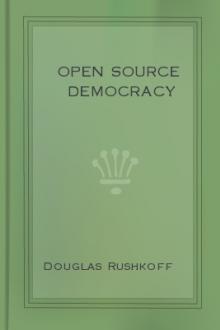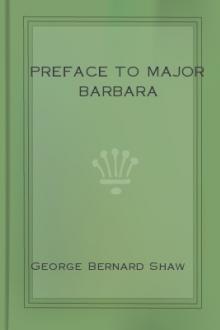The Fifteen Decisive Battles of the World from Marathon to Waterloo, Edward Creasy [simple e reader TXT] 📗

- Author: Edward Creasy
- Performer: -
Book online «The Fifteen Decisive Battles of the World from Marathon to Waterloo, Edward Creasy [simple e reader TXT] 📗». Author Edward Creasy
axe. He had deep and speedy need of this significant part of the insignia of Saxon royalty.
A messenger from Normandy soon arrived to remind Harold of the oath which he had sworn to the Duke “with his mouth, and his hand upon good and holy relics.” “It is true,” replied the Saxon king, “that I took an oath to William; but I took it under constraint: I promised what did not belong to me—what I could not in any way hold: my royalty is not my own; I could not lay it down against the will of the country, nor can I against the will of the country take a foreign wife. As for my sister, whom the Duke claims that he may marry her to one of his chiefs, she has died within the year; would he have me send her corpse?”
William sent another message, which met with a similar answer; and then the Duke published far and wide through Christendom what he termed the perjury and bad faith of his rival; and proclaimed his intention of asserting his rights by the sword before the year should expire, and of pursuing and punishing the perjurer even in those places where he thought he stood most strongly and most securely.
Before, however, he commenced hostilities, William, with deep laid policy submitted his claims to the decision of the Pope.
Harold refused to acknowledge this tribunal, or to answer before an Italian priest for his title as an English king. After a formal examination of William’s complaints by the Pope and the cardinals, it was solemnly adjudged at Rome that England belonged to the Norman duke; and a banner was sent to William from the holy see, which the Pope himself had consecrated and blessed for the invasion of this island. The clergy throughout the continent were now assiduous and energetic in preaching up William’s enterprise as undertaken in the cause of God. Besides these spiritual arms (the effect of which in the eleventh century must not be measured by the philosophy or the indifferentism of the nineteenth), the Norman duke applied all the energies of his mind and body, all the resources of his duchy, and all the influence he possessed among vassals or allies, to the collection of “the most remarkable and formidable armament which the Western nations had witnessed.” [Sir James Mackintosh’s History of England, vol.
i. p. 97.] All the adventurous spirits of Christendom flocked to the holy banner, under which Duke William, the most renowned knight and sagest general of the age, promised to lead them to glory and wealth in the fair domains of England. His army was filled with the chivalry of continental Europe, all eager to save their souls by fighting at the Pope’s bidding, ardent to signalise their valour in so great an enterprise, and longing also for the pay and the plunder which William liberally promised. But the Normans themselves were the pith and the flower of the army; and William himself was the strongest, the sagest, and fiercest spirit of them all.
Throughout the spring and summer of 1066, all the seaports of Normandy, Picardy, and Brittany rang with the busy sound of preparation. On the opposite side of the Channel, King Harold collected the army and the fleet with which he hoped to crush the southern invaders. But the unexpected attack of King Harald Hardrada of Norway upon another part of England, disconcerted the skilful measures which the Saxon had taken against the menacing armada of Duke William.
Harold’s renegade brother, Earl Tostig, had excited the Norse king to this enterprise, the importance of which has naturally been eclipsed by the superior interest attached to the victorious expedition of Duke William, but which was on a scale of grandeur which the Scandinavian ports had rarely, if ever, before witnessed. Hardrada’s fleet consisted of two hundred war-ships, and three hundred other vessels, and all the best warriors of Norway were in his host. He sailed first to the Orkneys, where many of the islanders joined him, and then to Yorkshire. After a severe conflict near York, he completely routed Earls Edwin and Morcar, the governors of Northumbria. The city of York opened its gates, and all the country, from the Tyne to the Humber, submitted to him. The tidings of the defeat of Edwin and Morcar compelled Harold to leave his position an the southern coast, and move instantly against the Norwegians. By a remarkably rapid, march, he reached Yorkshire in four days, and took the Norse king and his confederates by surprise. Nevertheless, the battle which ensued, and which was fought near Stamford Bridge, was desperate, and was long doubtful. Unable to break the ranks of the Norwegian phalanx by force, Harold at length tempted them to quit their close order by a pretended flight. Then the English columns burst in among them, and a carnage ensued, the extent of which may be judged of by the exhaustion and inactivity of Norway for a quarter of a century afterwards. King Harald Hardrada, and all the flower of his nobility, perished on the 25th of September, 1066, at Stamford Bridge; a battle which was a Flodden to Norway.
Harold’s victory was splendid; but he had bought it dearly by the fall of many of his best officers and men; and still more dearly by the opportunity which Duke William had gained of effecting an unopposed landing on the Sussex coast. The whole of William’s shipping had assembled at the mouth of the Dive, a little river between the Seine and the Orme, as early as the middle of August.
The army which he had collected, amounted to fifty thousand knights, and ten thousand soldiers of inferior degree. Many of the knights were mounted, but many must have served on foot; as it is hardly possible to believe that William could have found transports for the conveyance of fifty thousand war-horses across the Channel. For a long time the winds were adverse; and the Duke employed the interval that passed before he could set sail in completing the organization and in improving the discipline of his army; which he seems to have brought into the same state of perfection, as was seven centuries and a half afterwards the boast of another army assembled on the same coast, and which Napoleon designed (but providentially in vain) for a similar descent upon England.
It was not till the approach of the equinox that the wind veered from the north-east to the west, and gave the Normans an opportunity of quitting the weary shores of the Dive. They eagerly embarked, and set sail; but the wind soon freshened to a gale, and drove them along the French coast to St. Valery, where the greater part of them found shelter; but many of their vessels were wrecked and the whole coast of Normandy was strewn with the bodies of the drowned. William’s army began to grow discouraged and averse to the enterprise, which the very elements thus seemed to fight against; though in reality the north-east wind which had cooped them so long at the mouth of the Dive, and the western gale which had forced them into St. Valery, were the best possible friends to the invaders. They prevented the Normans from crossing the Channel until the Saxon king and his army of defence had been called away from the Sussex coast to encounter Harald Hardrada in Yorkshire: and also until a formidable English fleet, which by King Harold’s orders had been cruising in the Channel to intercept the Normans, had been obliged to disperse temporarily for the purpose of refitting and taking in fresh stores of provisions.
Duke William used every expedient to re-animate the drooping spirits of his men at St. Valery; and at last he caused the body of the patron saint of the place to be exhumed and carried in solemn procession, while the whole assemblage of soldiers, mariners, and appurtenant priests implored the saint’s intercession for a change of wind. That very night the wind veered, and enabled the mediaeval Agamemnon to quit his Aulia.
With full sails, and a following southern breeze, the Norman armada left the French shores and steered for England. The invaders crossed an undefended sea, and found an undefended coast. It was in Pevensey Bay in Sussex, at Bulverhithe, between the castle of Pevensey and Hastings, that the last conquerors of this island landed, on the 29th of September, 1066.
Harold was at York, rejoicing over his recent victory, which had delivered England from her ancient Scandinavian foes, and resettling the government of the counties which Harald Hardrada had overrun, when the tidings reached him that Duke William of Normandy and his host had landed on the Sussex shore. Harold instantly hurried southward to meet this long-expected enemy.
The severe loss which his army had sustained in the battle with the Norwegians must have made it impossible for any large number of veteran troops to accompany him in his forced march to London, and thence to Sussex. He halted at the capital only six days; and during that time gave orders for collecting forces from his southern and midland counties, and also directed his fleet to reassemble off the Sussex coast. Harold was well received in London, and his summons to arms was promptly obeyed by citizen, by thane, by sokman, and by ceorl; for he had shown himself during his brief reign a just and wise king, affable to all men, active for the good of his country, and (in the words of the old historian) sparing himself from no fatigue by land or sea. [See Roger de Hoveden and William of Malmesbury, cited in Thierry, book iii.] He might have gathered a much more numerous force than that of William, but his recent victory had made, him over-
confident, and he was irritated by the reports of the country being ravaged by the invaders. As soon therefore, as he had collected a small army in London, he marched off towards the coast: pressing forward as rapidly as his men could traverse Surrey and Sussex in the hope of taking the Normans unawares, as he had recently by a similar forced march succeeded in surprising the Norwegians. But he had now to deal with a foe equally brave with Harald Hardrada, and far more skilful and wary.
The old Norman chroniclers describe the preparations of William on his landing, with a graphic vigour, which would be wholly lost by transfusing their racy Norman couplets and terse Latin prose into the current style of modern history. It is best to follow them closely, though at the expense of much quaintness and occasional uncouthness of expression. They tell us how Duke William’s own ship was the first of the Norman fleet. “It was called the Mora, and was the gift of his duchess, Matilda. On the head of the ship in the front, which mariners call the prow, there was a brazen child bearing an arrow with a bended bow. His face was turned towards England, and thither he looked, as though he was about to shoot. The breeze became soft and sweet, and the sea was smooth





Comments (0)